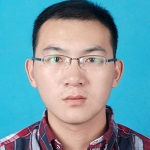Advances in Ultrasound Imaging and Sensing Technology
A special issue of Sensors (ISSN 1424-8220). This special issue belongs to the section "Sensing and Imaging".
Deadline for manuscript submissions: 15 July 2024 | Viewed by 691
Special Issue Editors
Interests: medical ultrasound imaging; medical robotics; pattern recognition; data mining; computer-aided diagnosis
Special Issues, Collections and Topics in MDPI journals
Interests: photoacoustic imaging technology; photoelectric detection and image engineering; multi-dimensional ultrasonic detection and imaging
Special Issues, Collections and Topics in MDPI journals
Special Issue Information
Dear Colleagues,
Sensors play a pivotal role in ultrasound imaging and sensing technology. They represent the essential properties of medical images, as well as the properties of solutions that address the issues of image resolution and contrast. In particular, ultrasound imaging and sensing technology are crucial in producing ultrasound images, processing ultrasonic signals, extracting wave features, and intelligently analyzing various types of ultrasound data. In recent years, more advanced progress in fields like artificial intelligence, computer vision, signal processing, and high-performance computation has emerged, and it will have vast application prospects, being of significant importance in various clinical fields.
Accordingly, the presented Special Issue is devoted to recent advances in ultrasound images and sensing technology. Among the topics of the issue are the following: (1) ultrasound image analysis; (2) multi-dimensional ultrasound image segmentation, registration, and visualization; (3) measurement and analyses of clinical physiological and pathological characteristics based on ultrasound images; (4) ultrasound/photoacoustic signal analysis and processing; (5) diagnostic methods of ultrasound/photoacoustic imaging; (6) advanced ultrasound/photoacoustic imaging in biomedicine; (7) artificial intelligence for ultrasound imaging and sensing technology; (8) any topics related to the concept of ultrasound imaging and sensing technology, i.e., theory, system, and applications.
Prof. Dr. Qinghua Huang
Dr. Haigang Ma
Guest Editors
Manuscript Submission Information
Manuscripts should be submitted online at www.mdpi.com by registering and logging in to this website. Once you are registered, click here to go to the submission form. Manuscripts can be submitted until the deadline. All submissions that pass pre-check are peer-reviewed. Accepted papers will be published continuously in the journal (as soon as accepted) and will be listed together on the special issue website. Research articles, review articles as well as short communications are invited. For planned papers, a title and short abstract (about 100 words) can be sent to the Editorial Office for announcement on this website.
Submitted manuscripts should not have been published previously, nor be under consideration for publication elsewhere (except conference proceedings papers). All manuscripts are thoroughly refereed through a single-blind peer-review process. A guide for authors and other relevant information for submission of manuscripts is available on the Instructions for Authors page. Sensors is an international peer-reviewed open access semimonthly journal published by MDPI.
Please visit the Instructions for Authors page before submitting a manuscript. The Article Processing Charge (APC) for publication in this open access journal is 2600 CHF (Swiss Francs). Submitted papers should be well formatted and use good English. Authors may use MDPI's English editing service prior to publication or during author revisions.
Keywords
- ultrasound images
- ultrasound sensing
- ultrasound and photoacoustic imaging
- image analyses
- image segmentation
- signal processing







